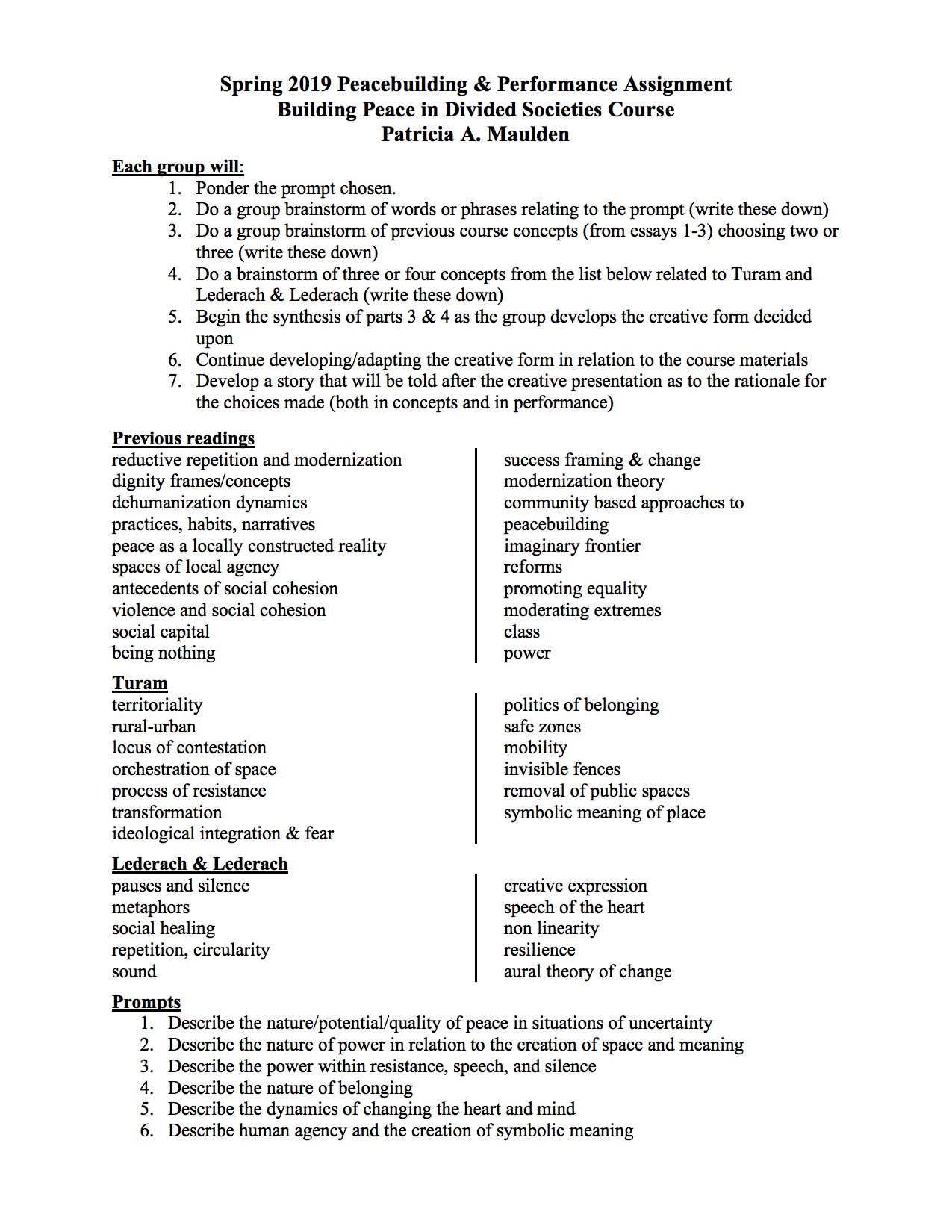Patricia Maulden
Associate Professor of Conflict Resolution
pmaulden@gmu.edu
During the Spring 2019 semester, in addition to my academic schedule, I attended a week-long Inside-Out Prison Education Training. For 20 years, the Inside-Out program has trained academics and instructors on ways to present curricula that have been developed for existing courses at the university to a student cohort of half undergraduate university students and half incarcerated individuals within either a jail or prison. The course included four intense days of individual work, during which I developed an understanding of the rules, restrictions, and approaches to curriculum organization and presentation within a jail or prison setting. In addition, my cohort spent three days inside a maximum-security prison, where we were taught by men who have been incarcerated for the greater part of their lives.
Interestingly, one of these men had been instrumental in the initiation and development of the Inside-Out approach. On the last day of our time in the prison, each of our four groups presented an example of an interactive activity that brought in all of the others through some form of creative expression. Each group chose a different way to present their main topic, but each involved movement, linking concepts and materials to creative engagement.
Participating in these activities, developing our own within my group, and listening to the debrief comments changed my thinking about how to present and work with very difficult, complex, and often troubling material. So, I tried this approach out in my Spring 2019 Building Peace in Divided Societies course, giving students an option to perform, in small groups, a creative expression of the analytic essay they would have otherwise written at the end of the semester.
As they were no doubt willing to do almost anything rather than another one of my analytic essays, they chose the performance option. To guide them in the development of their production, I created an assignment guideline that outlined seven steps they would need to follow in their process and provided a list of concepts and dynamics we discussed from the books that were included in the fourth assignment. I listed six prompts as points of departure for their planning; they chose one or blended two and went to work.
The video above is the result of their efforts, encapsulating analytical expression through acting, movement, and spoken word poetry. It was wonderful to watch them perform and to hear them tell, at the end of each performance, the story of what they did in relation to the readings, concepts, and dynamics we discussed throughout the class.
I also used this approach in our dual-degree program with the University of Malta as part of the course on Justice & Reconciliation: Law & Justice from a Conflict Perspective. The students in this instance were perhaps more skeptical, but they also faced the analytic essay dilemma. Their presentations were individually powerful, unique, and impactful, and engaged directly with the course materials.
From an instructor point of view, I have a new appreciation and respect for the creative potential and willingness of students to go beyond the traditional pedantic educational approach. While this creative approach may not always be feasible or even desirable, it can prove sufficiently evocative to open experiential windows of understanding and deep learning.
About the Peacebuilding Fellows Program on the Arlington Campus
The Building Peace in Divided Societies course (CONF 435/695) is part of the Peacebuilding Fellows Program, which, since 2015, has provided an academic program tailored for select students interested in gaining hands-on experience and understanding communities that are struggling to live peacefully together. Cohort fellows attend classes on the Arlington Campus two days a week, as well as participate in an internship. The Arlington location provides the benefit of easy access to internships with U.S. government agencies and international organizations, meetings with policy makers, and visits to peace-focused institutions and organizations.
As part of the program, the Building Peace in Divided Societies course focuses on the roots of peacebuilding/building peace as a conflict resolution strategy, exploring some of the following themes: changes over time; basic assumptions underpinning the emergence and continuance of conflict; what peace might ‘look’ like; how peace may be built; challenges to community participation; and varied reactions to the building peace enterprise. The class analyzes tensions (within the United States as well as internationally) embedded in the dynamics of conflict, systems maintenance, change, and peace, all by means of case studies (historical and current) and through multiple theoretical lenses and levels of analysis.
Student Performances
Possible Futures Professional Discussion (starting at 00:07)
- Performed and written by John Casey, Michelle Jung, and Omer Yousuf.
Poem of a Child Soldier (starting at 20:29)
- Performed and written by Lily Krietzberg, Oumou Ly, and Byron Phillips.
Demonstrating Power, Resilience, & Silence in the Creative Form (starting at 29:01)
- Performed by Sidney Davis, Cameron Cassar, and Wadha Al Dabous.
- Written by Sidney Davis, Cameron Cassar, Wadha Al Dabous, and Dominika Econa.

The above guidelines were developed by Patricia Maulden for the "Peacebuilding & Performance" assignment.
